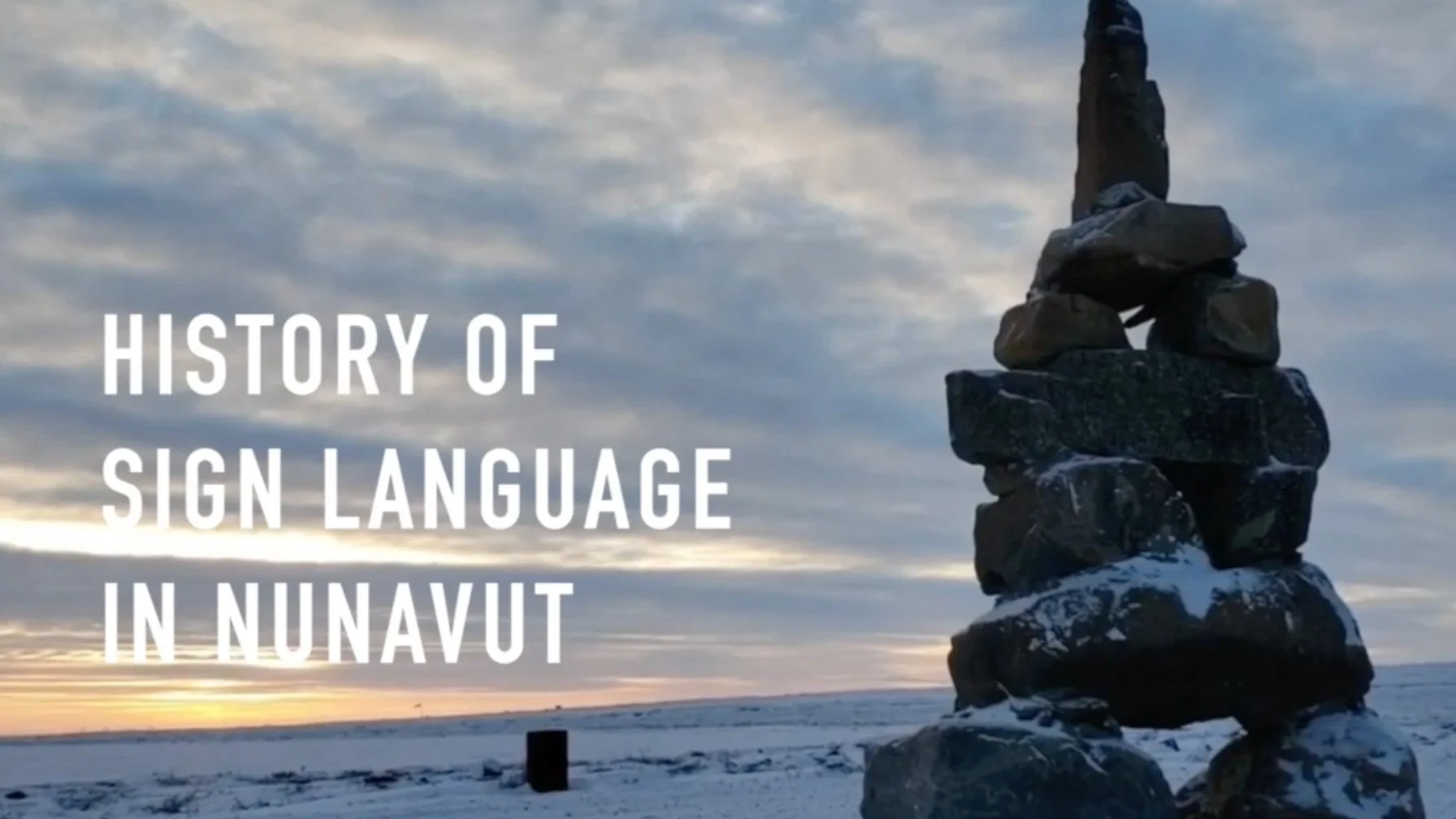Inuit Sign Language
LANGAGE DES SIGNES INUIT
History of ISL
Inuit Sign Language is a rich language with a long and proud cultural history, and deserves recognition, promotion and revitalization in the same way as spoken Inuit languages. The Inuit Societal Values (Inuit Qaujimajatuqangit) surrounding the importance of being welcoming and non-judgmental are enacted through the use of communication in sign language by many hearing Nunavummiut, a phenomenon which revitalizing ISL supports and encourages for future generations. While spoken Inuit languages are clearly important, it is clear that Inuit culture holds communication as a highly esteemed value, in both spoken and signed modalities.
OUr Collaborations
The Canadian Deafness Research and Training Institute (CDRTI) works collaboratively with the Nunavut Deaf Society (NDS) to record and revitalize the Inuit Sign Language, and to identify deaf Nunavummiut and their families across Nunavut. Our work involves the direct participation of deaf Nunavummiut and their families and friends, illustrating a high degree of acceptance of deaf persons into community life and relatively widespread use of sign language among hearing persons. The use of fingerspelling by both deaf and hearing Nunavummiut among their families and friends in their communities is noteworthy, providing a more inclusive social model which directly reflects the Inuit Societal Value of being welcoming and inclusive inclusion (Tunnganarniq).
Our Approach
Recording historical and contemporary experiences of deaf Nunavummiut have proven to be informative for persons across Canada since recognizing the Inuit Sign Language as a part of the cultural history of our country is equally as important as recognizing the use of spoken and written Inuktut languages which embody particular social, cultural, linguistic and historical values.
As is the case with spoken Inuit languages, there are regional dialectical variations of the Inuit Sign Language which deserve attention. However, it is worth noting that despite regional dialectical variations of ISL, research suggests that ISL is mutually intelligible across Nunavut.
Inuit deaf persons and their families express a deep desire to have their language recognized and revitalized so that they may achieve improved access to services such as Justice, health, education and employment. Circulating ISL video materials at the regional, national, and international levels represents an important step for designing language and cultural heritage materials for general educational purposes, and especially for the development of urgently needed ISL interpreter training programs in Nunavut.
ISL resources
To date, there are 64 illustrated ISL vocabulary sign cards which include representations of Inuktitut/Inuinnaqtun, fingerspelling, ISL, English and French. Also, twelve Inuit Deaf life story videos have been created, enabling Deaf persons the opportunity to explain their experiences of Inuit customs, as well as the hardships of being disconnected from their families when they were sent down south to residential schools for the Deaf.
The production of Inuit Sign Language materials such as Deaf Inuit Life story videos, illustrated Deaf life story booklets, vocabulary flashcards, and language learning games comprise an important part of the history of language and culture in Nunavut. In particular, the notable inclusion of both hearing and deaf persons by virtue of widespread use of ISL within family and community networks demonstrates the Inuit values of inclusion, which provides a positive model for Deaf and disabled persons worldwide.















